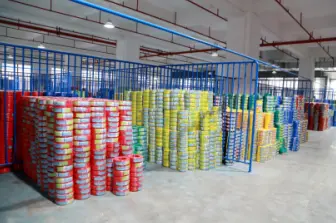Differences Between Armoured Electrical Wire and Non-Armoured Electrical Wire
In modern power systems and industrial applications, the choice of cables directly impacts power supply safety and system reliability. Armoured electrical wire and non-armoured electrical wire are two major types, and this article will delve into the differences between them, providing a reference for engineering selection.
Structural Differences
Armoured Electrical Wire: An additional metal armouring layer is added between the insulation and the outer sheath of the wire, typically made of steel tape or steel wires. This armoured layer protects the wire from external mechanical damage, prevents rodent attacks, and also provides some shielding effect, reducing electromagnetic interference.
Non-Armoured Electrical Wire: This type does not have an armouring layer, and the structure is relatively simple, generally consisting of a conductor, insulation layer, and outer sheath. This structure makes non-armoured electrical wire more flexible and easier to bend and install.
Performance Differences
Mechanical Strength: Armoured electrical wire, due to its metal armouring layer, has high mechanical strength and can withstand significant tensile forces, pressure, and impact. For example, in direct burial installation or areas subject to mechanical vibrations, armoured electrical wire provides better protection to the internal conductors and insulation. Non-armoured electrical wire has relatively lower mechanical strength and is suitable for environments with little risk of external force damage.
Protective Performance: The armouring layer of armoured electrical wire effectively prevents external objects from piercing, crushing, or damaging the wire. It also has some waterproof and moisture-resistant properties, making it suitable for harsh environments. Non-armoured electrical wire relies mainly on the insulation and outer sheath for protection, which is relatively weaker and requires higher installation environment standards.
Electromagnetic Shielding Performance: The metal armouring layer of armoured electrical wire provides excellent electromagnetic shielding, reducing the electromagnetic fields generated by internal currents from interfering with the external environment, and preventing external electromagnetic fields from disturbing the signals inside the wire. Non-armoured electrical wire generally does not have dedicated electromagnetic shielding structures, and its electromagnetic shielding performance is poor. In environments where electromagnetic interference is a concern, additional shielding measures may be necessary.
Classification Differences
Armoured electrical wire can be divided into three types: steel tape, fine steel wire, and coarse steel wire cables.
Non-armoured electrical wire can be classified into various types, including flame-retardant rubber-sheathed wires, power wires, communication wires, optical fibre wires, etc.
Different Application Scenarios
Armoured electrical wire, due to its additional metal protection layer, is suitable for underground burial, cable trench installation, or direct burial in environments where significant mechanical stress is expected. It is primarily used for temperature measurement, signal transmission, and special heating in industries such as chemicals, metallurgy, machinery manufacturing, power generation, and scientific experiments.
Non-armoured electrical wire is generally not used for underground burial but is widely used in various electrical equipment and circuits, such as televisions, electronics, optical fibres, etc., for transmitting electrical energy and signals.
In summary, armoured electrical wire and non-armoured electrical wire differ in structure, performance, classification, and application scenarios. Armoured electrical wire provides excellent mechanical performance and corrosion resistance, making it widely used in complex environments and special requirements for power transmission and signal transmission. By using armoured electrical wire, the wire is effectively protected from external damage, which extends its lifespan and ensures the stability and reliability of power and signal transmission.
Latest News & Blog
 English
English  français
français  Deutsch
Deutsch  العربية
العربية  tiếng việt
tiếng việt  ไทย
ไทย  čeština
čeština  Indonesia
Indonesia  Eesti
Eesti  български
български  slovenčina
slovenčina 



